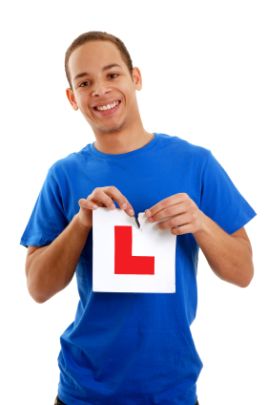What's the point of the theory test?
The official theory test is a relatively recent addition to the driving test, and has evolved and become more comprehensive over time. For many of us who ask our parents about the driving test, they have vague memories of being asked perhaps one or two questions at the start of the test about cars, but then getting on with the practical test itself.
Well, the point of the theory test is to ensure that new road users - those who pass their learners test - are aware of the rules of the road. Additionally, since the introduction of the hazard perception test, the theory test also ensures that they are aware of potential hazards and think about potential hazards and developing hazards whilst they are driving.
Research and statistics show that when a learner passes their test and becomes a licensed driver, they are more vulnerable than most in the first few months after they pass their test. Therefore by ensuring that they have passed a theory test it helps ensure that not only they know how to drive but also understanding driving theory, hazard perception. The ultimate aim is therefore to increase road safety for all and decrease the number of accidents that occur.
So the aims behind the theory test are noble and therefore you should see it not as a chore and extra expense but something that provides you with valuable information about the road and other road users, and thinking about hazards and so on could potentially save your life or that of other road users one day. It is in this context that you can see preparing thoroughly for the theory test is important; and of course you have to pass the theory test before you can take the practical test and become a fully fledged road user.
Related Articles...
Theory test case studies
One of the relatively new elements added to the driving theory test is what is called the case study element. This was introduced on 28th September 2009, and there is one case study in the theory...
Tips on buying a vehicle
When it comes to buying a car, many people buy second hand in order to save the costs of a new car which of course often come at a premium having had no previous owner.
However there are risks...
Taking the theory test if you don't speak English
Not everyone who takes the Driving Theory Test will be confident enough in their ability to speak and understand English to take the test. Whilst some people in Wales will want to take the test in...
Why is there a Hazard Perception Test
The statistics have long shown that the newer the driver, the more likely they are to be involved in accidents on the roads. This is probably because they are inexperienced as drivers, although...
How to learn UK road signs
Learning UK road signs is something that will unfortunately require you to
take the time to study them all. Many signs turn up in the theory test so
you do need to take the time to do this. But...
Who needs to take a theory test
A theory test is part of the process required for anyone who wants to become a qualified driver in the UK. There are two stages to being a standard car driver: first passing a theory test, and then...
Staying calm in your driving test
There is no doubt that many people get extremely nervous before the driving practical test, and whilst this can be frustrating or disconcerting, it is not necessarily a bad thing. Many people...
Mock Driving Theory
On our Mock Driving Theory page you can practice no fewer than fifteen different mock tests.
Each of them...
The multiple choice theory test
This is the first part of the theory test, and is done at a computer rather than on paper. There are many places around the country whereby you are able to take the theory test. Your driving...
Using head restraints
Your car will have head restraints in it, but do you take the time to adjust these before using the vehicle and ensuring they are set at the correct level for you? Head restraints in vehicles are...
Back to home page of driving theory test questions

